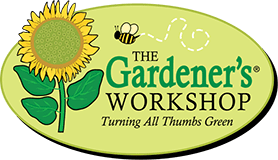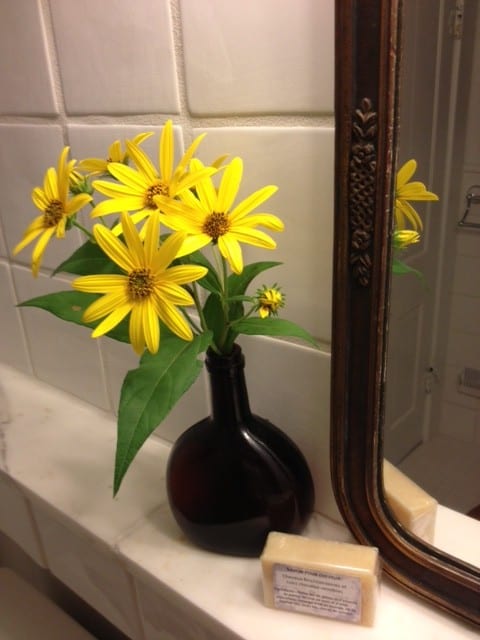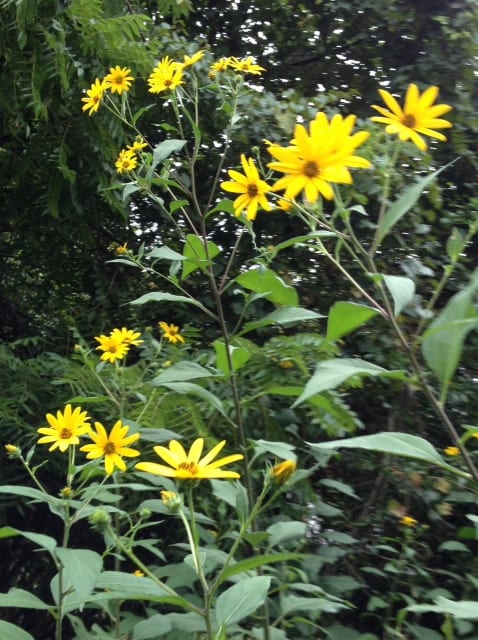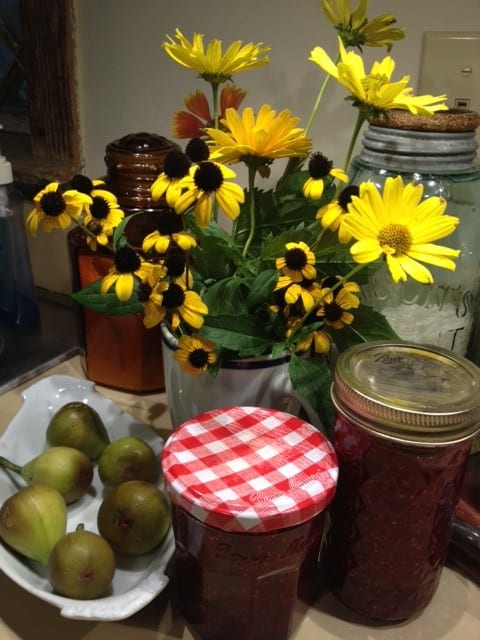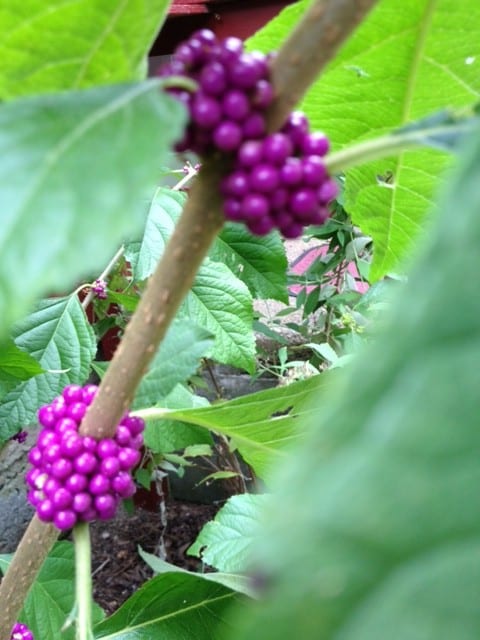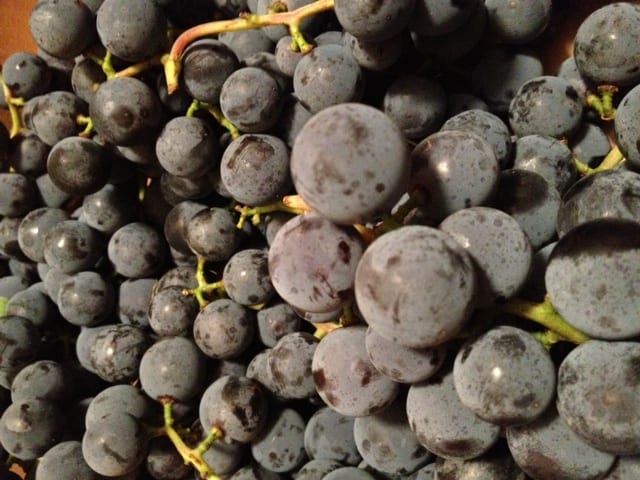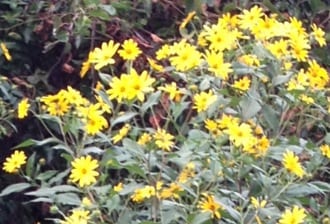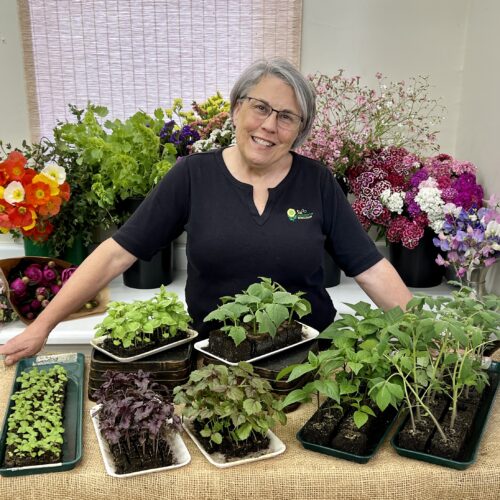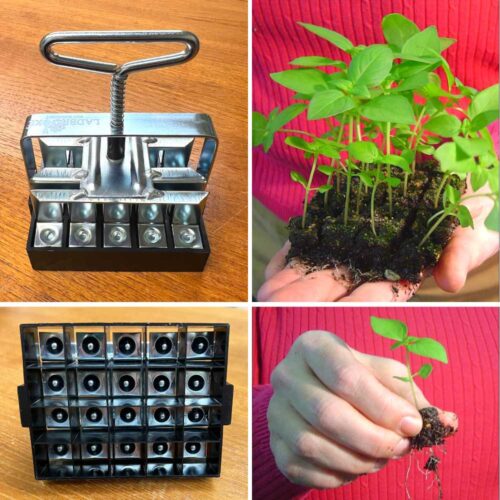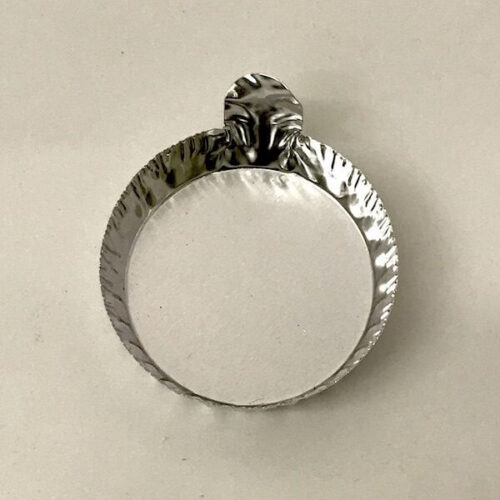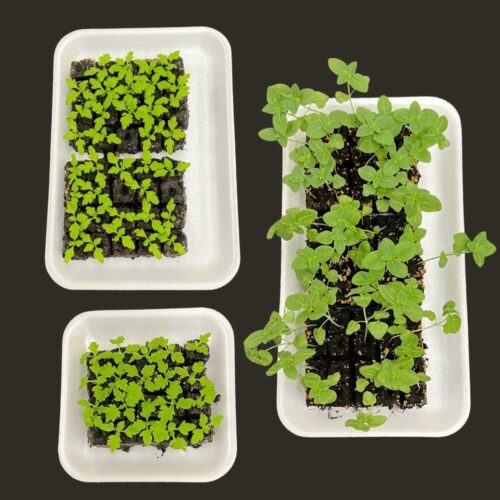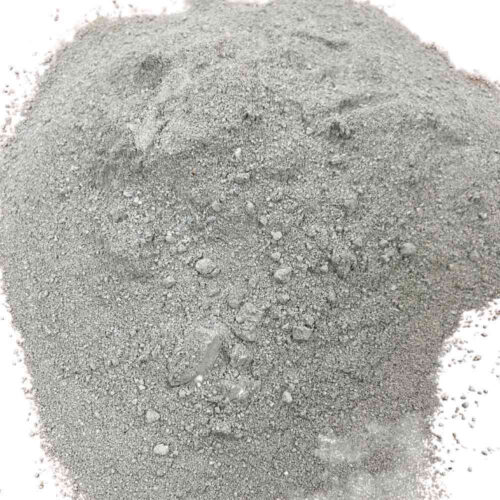End-of-Summer Yellow
Somewhere around the first of September it finally happens—a tiny flame of pure yellow appears at the top of a nondescript, ten-foot-tall weed just over my brick wall. The Jerusalem artichokes are starting to bloom! Since spring, the messy boring invasive greenery has been growing up and up until it towers over everything.
The iris bloom. The peonies, gladiolus, and larkspur come and go to brighten the garden in shades of pink and purple. But the plain artichoke leaves keep steadily growing taller. They look as though someone should just pull them out. And as a matter of fact, I do. I pull out or mow a lot of them, since they spread insidiously into and through every planting we have.
But, if the hurricanes and thunderstorms don’t smash them down before the first week in September, suddenly there they are high in the air, the most beautiful yellow flowers you ever saw. They are not only glamorous atop their leggy stems in the garden, they last a long time in a vase as well.
When I came home from the hospital with my first baby girl that September day, my sister celebrated my arrival with a big bouquet of Jerusalem artichokes. I will forever associate the girl with the sunny blossoms.
These gorgeous native North American flowers are a member of the sunflower family, but they are of course neither artichokes nor do they come from Jerusalem. Some call them sunchokes—a risky-sounding name when you consider that they are not only flowers, but a food as well, long used by the Native Americans. By the time of the first frost, they will have grown a delicious little tuber under the ground that you can slice up raw for salad, or fry into chips with salt, or cook and mash like a potato like my mother did. When she cooked them, they always seemed to me curiously waxy. Still, they are full of nutrients. They have an amazing amount of iron, potassium, and thiamine. They are also low in calories and high in fiber.
I went out with my mom’s little shovel just a few minutes ago, to check if any tubers had formed yet, but no. Later, around Thanksgiving, when the stalks have turned brown and the leaves fallen, cleaning up the artichoke bed will reward me with knobby little nuggets. I can keep them for weeks in the fridge.This year I want to try a salad with thin raw slices drenched in olive oil, garlic, and lemon juice, and topped with shreds of a good Parmesan.
There are two colors I associate with the sunny yellow petals of the Jerusalem artichoke.
One is the improbably purple beautyberry, voluptuous in these last hot days of summer, driving the mockingbirds and brown thrashers and cardinals to a frenzy as they try to stake out their territory. My father used to let us nibble the perfume-y berries when we found them in the woods. He called them turkey berries, but I’ve never heard anyone else do so! These bushes are happily spreading around our yard, all on their own.
The other is the deeper blue of the Concord grape. This is the time of year my father would order boxes of grapes from the Wengers in Stuarts Draft. His friends and customers would come to pick up their share at the big square white farmhouse on Lucas Creek Road. Recently, I met a Korean lady named Sunny, whose story will forever connect for me the yellow of the flowers with the blue of the grape.
She said she had come to Dad’s home to pick up her grape order. Noticing the bright sunny color of the artichokes over in the garden, she cried out how beautiful they were. He, gallant man that he was, went and cut an armload of them for her to take homer. She told the story with tears rolling down her cheeks. It was his last autumn.
As the skies turn gray today, I feel a change in the air. The fresh yellow of the Jerusalem artichoke is a marker of the end of summer, and the harbinger of autumn and winter days to come.
Susan Yoder Ackerman is a writer and gardener in Newport News, Virginia. Both her writing and her gardening are enhanced by tending a century-old family farmhouse and eight grandchildren that come and go. You can email Susan at [email protected].
